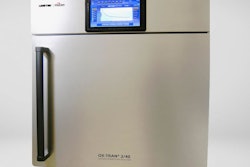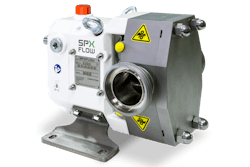
Show Daily Exclusive - The X-ray Buyer’s Guide from Anritsu Infivis (Booth E-7912) delivers information brand owners need to know before investing in an x-ray inspection system. The Guide, written by Chris Young, business development manager at Anritsu, covers less obvious aspects of machine cost and performance, describes technology advances and identifies sanitation trends. The tips not only help choose a system that meets detection goals, but does so in a way that maximizes return on investment (ROI) and overall equipment effectiveness (OEE).
COST OF REPLACEMENT PARTS
Most buyers today are savvy enough to know there’s more to the cost of x-ray equipment than the upfront cost. If you are upgrading from metal detection to x-ray inspection, you’ll want to factor in the ongoing costs of two expensive replacement parts: the tube (also called the generator) and the detector. To account for these ongoing costs, ask about the life expectancy and replacement cost for both parts before you buy. Similar to car buying, you will find some brands have longer lasting parts than others.
PERFORMANCE VS. POWER USAGE
In choosing a system, it helps to understand how it works. The lifetime of an x-ray tube can be compared to that of a three-way light bulb. The x-ray tube will eventually fail after a number of hours of use. The power setting impacts x-ray tube longevity. At a higher power setting, the tube fails sooner. But before you think about reducing the power setting to increase the lifetime of the x-ray tube, understand there is a trade-off. Reduced power means reduced image quality, and thus, poorer detection limits.
From an engineering standpoint, optimizing machines for both high performance and low power use is exceptionally challenging. That is why most x-ray machine manufacturers today specialize in either high performance (i.e., finding the smallest contaminants) or low-energy, long-life systems.
Machines with high detection capability normally use high amounts of energy and therefore have shorter lifetimes. Alternatively, machines using less power typically have poorer detection rates. Until now. Anritsu addresses both needs with one machine.
Anritsu’s systems with advanced long life (ALL) technology offer:
- An x-ray generator and detector with three times the life of conventional models
- A more efficient cooling system
- Less power consumption
- 20% reduction in lifetime costs.
DETECTION CAPABILITY VS. FALSE REJECTS
One misconception with buyers is the belief that a machine just needs to be “good enough” to meet the specification. Many buyers are unaware that extra performance capability beyond your specification is valuable. This is best demonstrated by example.
Consider detection Systems A, B and C that detect stainless steel at 0.7mm, 1.0mm and 1.5mm, respectively. The detection goal is to find stainless steel at 1.5mm and greater. Assuming all other factors are equal (e.g., equipment cost, reliability), which system adds the most value for the food processor?
On the surface it appears any of the systems are suitable. However, what many buyers don’t realize is that superior detection capability (such as with Systems A and B that detect contaminants smaller than your specification level) can be “converted” to improve a machine’s capability to reduce false rejects.
How does that work? Superior performance capability enables the machine to be set at a lower sensitivity level and thereby reduce false rejects.
So, returning to the example, while System A, B or C meets the inspection goal, the capability to reduce false rejects is strongest with System A.
Why care about false rejects? With the continued pressure on cost, food processors are increasingly paying attention to line efficiency using measures such as OEE. Many plants are adding OEE as a key performance indicator to their operational metrics. Boosting the yield of production lines by reducing false rejects is an efficient way to increase the output of an operation without the capital costs and space required to install additional lines.
What does OEE have to do with x-ray systems? The OEE metric is comprised of three factors: machine uptime, process yield and speed. False rejects waste good product, directly impacting process yield and OEE. X-ray systems with superior detection capability (i.e., smaller than your specification) improve process yield by reducing false rejects.
In addition to reducing false rejects, superior detection capability provides flexibility to have a higher level of detection on an “as needed” basis. Imagine a scenario where you know something was accidentally dropped into a batch. Detection levels could be increased for a period of time to ensure the contaminants are found.
HYGIENIC DESIGN AND ROI
While performance and cost are the most important criteria, clean design continues to gain importance. Food processors want to streamline sanitation processes and eliminate hiding places for biological contaminants. Design features such as easy parts removal/attachment, easy-to-clean conveyors, one-touch removal of shield curtains and removal/attachment of rollers without tools can streamline the cleaning processes. More efficient cleaning contributes to ROI.
For more information, visit www.anritsu.com. SD

























